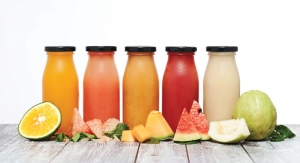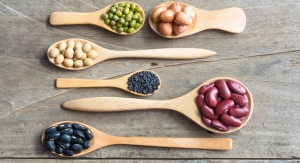Melissa Kvidahl, Contributing Writer09.08.16
Every few years, a new villain seems to emerge in the food industry. Fat, sodium, cholesterol and carbohydrates have all had their turn in the hot seat. And now, without a doubt, it’s sugar’s turn.
In May, the U.S. Food and Drug Administration (FDA) made design and content changes to the Nutrition Facts label used across the food and beverage industry nationwide. Changes include refreshing serving sizes and updating the daily values to match the most current Dietary Guidelines for Americans; but, notably, the “added sugars” row will also look quite different.
In addition to highlighting grams of added sugars per serving, the label will also feature a percent daily value (%DV) for added sugars. In its press release announcing this change, the FDA explained its reasoning: that it is difficult to meet nutrient needs while staying within calorie limits if more than 10% of an individual’s total daily calories come from added sugars. Food manufacturers will be required to use this new label by July 26, 2018. Those with less than $10 million in annual food sales will have an additional year to comply.
Locally, states and cities are taking matters into their own hands. Philadelphia, for example, recently became the first major U.S. city to take a stand against sugar when its City Council voted to approve a 1.5 cents-per-ounce surcharge on soda and other sweetened drinks on June 16 of this year. (Previously, Berkeley, California had passed a similar tax, but its population is just a fraction of Philadelphia’s; New York and San Francisco have tried for similar measures and failed.) This tax not only applies to sugary drinks but also those like diet sodas, which are sweetened artificially.
Consumer Confusion
Indeed, sugar and sweeteners are having a tough go of it in today’s marketplace. And, according to data from Mintel, there’s also a fair share of confusion in the category among consumers.
When asked which sugar substitutes they considered to be natural, the most common selection among consumers surveyed by the market researcher was agave (at 34%), followed by relative newcomer coconut sugar, and stevia. However, a quarter of respondents did not consider any of the substitutes listed to be natural—that list included high fructose corn syrup, sucralose and aspartame, but it also included monk fruit and xylitol (in addition to agave, coconut sugar and stevia). About two thirds of respondents said there are so many types of sweeteners that it’s hard to know the difference.
The good news is that, with a little education, consumers take notice of natural sweeteners. Not only do they prefer them, but many are willing to pay a premium for them, and for products that include them. One quarter of respondents ages 18-38 (what Mintel called iGeneration/Millennials) and 17% of those ages 39-50 were willing to pay a premium; further, households with children remain an additional audience for natural sweeteners, with one-quarter of such households indicating they’d pay a premium as compared to just 12% of households without children. High fructose corn syrup is on the chopping block for many shoppers, with Mintel reporting that nearly two thirds of iGeneration/Millennials—and nearly three in five sugar substitute users of all ages—believe it’s just as harmful as sugar substitutes.
However, unlike other categories in which natural options appeal to shoppers by virtue of being natural alone, the line in the sand when it comes to sweeteners is not always between natural and chemical. Mintel reported that iGeneration and Millennial respondents were most likely to agree that foods and beverages sweetened with fruit juice are unhealthy—nearly half of this group reported agreeing with this statement, as opposed to just 8% of Swing Generation/WWII respondents (age 70+). So, the market researcher concluded, though juice may be categorized as a more natural sweetener than other substitutes on the market, younger consumers who typically flock to natural options may not even see it as better for them.
A Tale of Two Responses
When it comes to sugar, suppliers are responding to increased negativity by shifting the way in which they market the ingredient itself, often successfully capitalizing on the health halo afforded by natural and organic options. Indeed, data from the Mintel Global New Products Database showed that 8% of new sugars launched on the market carry a “raw” claim; 24% of them carry an organic claim (up from 11% in 2011).
When it comes to substitutes, the natural ingredients industry is responding by offering better-for-you options that boast both a healthier profile and delicious taste, with none of the chemicals. “The current discussion about sugar reduction is necessary to guide consumers to more balanced nutrition, but that is not telling the entire story,” said Jon Peters, president of BENEO, Inc., Morris Plains, NJ. “Sugars are not all equal in their characteristics. It is the ingredients’ physiology that matters, and not necessarily just food chemistry.” That’s why the natural ingredients industry offers a variety of sugar substitutes for a range of applications.
At BENEO, this translates to options derived from beet sugar, which offers mild sweetness. Palatinose (isomaltulose) is slowly digestible, which means there’s no unpleasant spike and crash, and works in cereals, beverages, confectionery and dairy products. ISOMALT offers half the calories of sugar and a very low blood glucose response, and works well in hard candies, chewing gum, baked goods and chocolate.
“Different sweeteners have their own properties that determine how they have to be handled under various manufacturing conditions, which is why food scientists tend to stick with the usual suspects,” said Peter Sokoloski, key account representative at NOW Foods/Healthco, Bloomingdale, IL. “Today, more consumers are looking for different options that they view as healthier, and manufacturers are responding.”
One way is by revamping such “usual suspects” as stevia, as NOW Foods/Healthco has done with its Stevia FSE (or BetterStevia, as it’s branded under NOW Foods). An organic extract, Stevia FSE fits within the overall better-for-you trends shaping the food industry like non-GMO, but it also meets sugar substitute benchmarks like being zero-calorie and also aftertaste-free.
At Cargill, Minneapolis, MN, Andy Ohmes, global commercial manager for high intensity sweeteners, is seeing a shift in how stevia is being used. He noted that the company’s ViaTech is now tapped for use in many products outside the beverage industry, including bars, cereals, baked goods and confectionery. Since 2008 when stevia was first approved, suppliers like Cargill have been able to make sugar reductions of 50, 60 and even 70% possible with the ingredient, Mr. Ohmes said.
As a result of this success, widespread appeal among non-beverage brands looking to include stevia in their products reveals a challenge. “In beverages, when you take out the sugar, you can add back water,” he explained. “However, in categories that rely on the functionality of sugar to provide texture, bulk and browning, it becomes a bit harder to work with stevia sweeteners.” In these cases, formulators may have to incorporate a bulking agent, he said.
Cecilia McCollum, executive vice president of Blue California, Rancho Santa Margarita, CA, recommended adding apple powder, applesauce, fiber sources, starches or other additives that can improve volume when sugar is eliminated because, “when it comes to food products,” she said, “sugar, besides sweetness, also offers bulk and other functions. So formulators still have to solve these challenges.”
Though stevia has come a long way, one-for-one substitutes are not always possible. In fact, such substitutes are often impossible for formulators, regardless of the sugar alternative they choose.
“The key formulation challenges with most of the sugar alternatives are sucrose-like sweet taste (time intensity and temporal), non-sucrose flavor profiles (bitterness, metallic, licorice, etc.), mouth-feel, solubility, tolerance, osmolarity (in sports drinks), freezing point depression (in ice creams), and processing and storage stability,” said Kasi Sundaresan, senior associate of sweetener applications at Ingredion Incorporated, Westchester, IL. “There’s no universal solution for replacing sugar; it is very application dependent.”
Enter sweetener blends. Blends can include just sweeteners, as in the case of Ingredion’s ENLITEN 300000 stevia leaf extract and ERYSTA C40 erythritol, which together create a better-tasting product, Ms. Sundaresan said. But they can also take the shape of sweeteners paired with additional ingredients like prebiotic fibers, which can bring desired mouth-feel back to products that use high intensity sweeteners.
“Consumers want clean and natural, but they also want great taste,” said Lisa Unlu, senior food scientist at Innovative Food Processors, Inc., (IFP) Faribault, MN. “The natural high intensity sweetener market has matured beautifully to meet this demand. Product developers are now formulating novel blends and systems customized specifically to reduce or remove sugar in a formulation, while providing the sweetness required to hit the consumer’s sweet spot.” At IFP, proprietary blends tap into the sweetness of stevia and monk fruit extract, but the company also creates custom blends for its partners.
Blends also help to solve yet another challenge the natural sweetener market faces, which is that the sweetness profiles of different ingredients are very different. “Some, like stevia, might have ‘up front’ sweetness, while others like monk fruit or advantame, have ‘late’ or ‘back end’ sweetness profiles,” Ms. Unlu added. “Certain stevia ingredients still have that bitter note common to stevia ingredients. Other natural high intensity sweeteners like monk fruit extract do not carry a straight ‘clean’ sweetness. They are not a match for pure cane sugar.”
That’s why formulators at IFP often use a systems approach that combines sweeteners. This approach, said Ms. Unlu, ensures that “both up front and back end (or sustaining) sweetness is ensured for the product they are developing. It’s all about the system itself, as well as how it interacts with the full product formulation.”
A similar solution is standard at Suzanne’s Specialties, New Brunswick, NJ, where Jim Morano, head of new product and business development, sees the demand for natural sweeteners only growing as the overall demand for natural products drives sales in the food industry as a whole. “A lot of times, you are converting a product from the mass market to the natural market to meet this demand, and you need to replace refined sweeteners with natural alternatives,” he said. “And, more often than not, there is not a direct translation. A combination of sweeteners will have the functionality that can replace a refined sweetener.”
Calorie Counts vs. Clean Label
A report from Packaged Facts, Rockville, MD, identified honey as a “bright spot” among caloric sweeteners, evidenced by the ingredient’s strong sales and volume in recent years.
The most recent data from the market researcher revealed that 28% of consumers reported increasing their use of honey for a few reasons: they liked that it was “less processed” and that it could be obtained locally, and they also liked that it offers health benefits like enzyme, antioxidant and antibacterial properties. It likely doesn’t hurt that clean label trends support ingredients like honey, which are recognizable to consumers on food labels.
Similarly, 41% of consumers reported increasing their use of agave. And despite the presence of natural options on the market—like stevia and monk fruit—Packaged Facts reported that overall consumer sentiment about zero-calorie sweeteners was negative, with 47% of survey respondents saying they believe zero-calorie sweeteners aren’t good for you, rising to 60% among respondents ages 35 to 90.
How will the FDA’s new Nutrition Facts label, which calls out added sugar but does not distinguish between types of sugar, impact natural caloric sweeteners? Stay tuned.
“At one point in time you were able to put molasses on a label and it was listed among the total carbohydrates, but it was not listed as part of added sugars,” said Mr. Morano. “The implication is that added sugars are bad for you. On the positive side, for those using these types of sweeteners, you can use a natural marker, which is one of the first things a consumer sees. There’s also the clean label perspective, which some of these ingredients meet. We are just embarking on this new Nutrition Facts label. The jury’s out as to whether it will have an impact on some of the natural caloric sweeteners available.”
In May, the U.S. Food and Drug Administration (FDA) made design and content changes to the Nutrition Facts label used across the food and beverage industry nationwide. Changes include refreshing serving sizes and updating the daily values to match the most current Dietary Guidelines for Americans; but, notably, the “added sugars” row will also look quite different.
In addition to highlighting grams of added sugars per serving, the label will also feature a percent daily value (%DV) for added sugars. In its press release announcing this change, the FDA explained its reasoning: that it is difficult to meet nutrient needs while staying within calorie limits if more than 10% of an individual’s total daily calories come from added sugars. Food manufacturers will be required to use this new label by July 26, 2018. Those with less than $10 million in annual food sales will have an additional year to comply.
Locally, states and cities are taking matters into their own hands. Philadelphia, for example, recently became the first major U.S. city to take a stand against sugar when its City Council voted to approve a 1.5 cents-per-ounce surcharge on soda and other sweetened drinks on June 16 of this year. (Previously, Berkeley, California had passed a similar tax, but its population is just a fraction of Philadelphia’s; New York and San Francisco have tried for similar measures and failed.) This tax not only applies to sugary drinks but also those like diet sodas, which are sweetened artificially.
Consumer Confusion
Indeed, sugar and sweeteners are having a tough go of it in today’s marketplace. And, according to data from Mintel, there’s also a fair share of confusion in the category among consumers.
When asked which sugar substitutes they considered to be natural, the most common selection among consumers surveyed by the market researcher was agave (at 34%), followed by relative newcomer coconut sugar, and stevia. However, a quarter of respondents did not consider any of the substitutes listed to be natural—that list included high fructose corn syrup, sucralose and aspartame, but it also included monk fruit and xylitol (in addition to agave, coconut sugar and stevia). About two thirds of respondents said there are so many types of sweeteners that it’s hard to know the difference.
The good news is that, with a little education, consumers take notice of natural sweeteners. Not only do they prefer them, but many are willing to pay a premium for them, and for products that include them. One quarter of respondents ages 18-38 (what Mintel called iGeneration/Millennials) and 17% of those ages 39-50 were willing to pay a premium; further, households with children remain an additional audience for natural sweeteners, with one-quarter of such households indicating they’d pay a premium as compared to just 12% of households without children. High fructose corn syrup is on the chopping block for many shoppers, with Mintel reporting that nearly two thirds of iGeneration/Millennials—and nearly three in five sugar substitute users of all ages—believe it’s just as harmful as sugar substitutes.
However, unlike other categories in which natural options appeal to shoppers by virtue of being natural alone, the line in the sand when it comes to sweeteners is not always between natural and chemical. Mintel reported that iGeneration and Millennial respondents were most likely to agree that foods and beverages sweetened with fruit juice are unhealthy—nearly half of this group reported agreeing with this statement, as opposed to just 8% of Swing Generation/WWII respondents (age 70+). So, the market researcher concluded, though juice may be categorized as a more natural sweetener than other substitutes on the market, younger consumers who typically flock to natural options may not even see it as better for them.
A Tale of Two Responses
When it comes to sugar, suppliers are responding to increased negativity by shifting the way in which they market the ingredient itself, often successfully capitalizing on the health halo afforded by natural and organic options. Indeed, data from the Mintel Global New Products Database showed that 8% of new sugars launched on the market carry a “raw” claim; 24% of them carry an organic claim (up from 11% in 2011).
When it comes to substitutes, the natural ingredients industry is responding by offering better-for-you options that boast both a healthier profile and delicious taste, with none of the chemicals. “The current discussion about sugar reduction is necessary to guide consumers to more balanced nutrition, but that is not telling the entire story,” said Jon Peters, president of BENEO, Inc., Morris Plains, NJ. “Sugars are not all equal in their characteristics. It is the ingredients’ physiology that matters, and not necessarily just food chemistry.” That’s why the natural ingredients industry offers a variety of sugar substitutes for a range of applications.
At BENEO, this translates to options derived from beet sugar, which offers mild sweetness. Palatinose (isomaltulose) is slowly digestible, which means there’s no unpleasant spike and crash, and works in cereals, beverages, confectionery and dairy products. ISOMALT offers half the calories of sugar and a very low blood glucose response, and works well in hard candies, chewing gum, baked goods and chocolate.
“Different sweeteners have their own properties that determine how they have to be handled under various manufacturing conditions, which is why food scientists tend to stick with the usual suspects,” said Peter Sokoloski, key account representative at NOW Foods/Healthco, Bloomingdale, IL. “Today, more consumers are looking for different options that they view as healthier, and manufacturers are responding.”
One way is by revamping such “usual suspects” as stevia, as NOW Foods/Healthco has done with its Stevia FSE (or BetterStevia, as it’s branded under NOW Foods). An organic extract, Stevia FSE fits within the overall better-for-you trends shaping the food industry like non-GMO, but it also meets sugar substitute benchmarks like being zero-calorie and also aftertaste-free.
At Cargill, Minneapolis, MN, Andy Ohmes, global commercial manager for high intensity sweeteners, is seeing a shift in how stevia is being used. He noted that the company’s ViaTech is now tapped for use in many products outside the beverage industry, including bars, cereals, baked goods and confectionery. Since 2008 when stevia was first approved, suppliers like Cargill have been able to make sugar reductions of 50, 60 and even 70% possible with the ingredient, Mr. Ohmes said.
As a result of this success, widespread appeal among non-beverage brands looking to include stevia in their products reveals a challenge. “In beverages, when you take out the sugar, you can add back water,” he explained. “However, in categories that rely on the functionality of sugar to provide texture, bulk and browning, it becomes a bit harder to work with stevia sweeteners.” In these cases, formulators may have to incorporate a bulking agent, he said.
Cecilia McCollum, executive vice president of Blue California, Rancho Santa Margarita, CA, recommended adding apple powder, applesauce, fiber sources, starches or other additives that can improve volume when sugar is eliminated because, “when it comes to food products,” she said, “sugar, besides sweetness, also offers bulk and other functions. So formulators still have to solve these challenges.”
Though stevia has come a long way, one-for-one substitutes are not always possible. In fact, such substitutes are often impossible for formulators, regardless of the sugar alternative they choose.
“The key formulation challenges with most of the sugar alternatives are sucrose-like sweet taste (time intensity and temporal), non-sucrose flavor profiles (bitterness, metallic, licorice, etc.), mouth-feel, solubility, tolerance, osmolarity (in sports drinks), freezing point depression (in ice creams), and processing and storage stability,” said Kasi Sundaresan, senior associate of sweetener applications at Ingredion Incorporated, Westchester, IL. “There’s no universal solution for replacing sugar; it is very application dependent.”
Enter sweetener blends. Blends can include just sweeteners, as in the case of Ingredion’s ENLITEN 300000 stevia leaf extract and ERYSTA C40 erythritol, which together create a better-tasting product, Ms. Sundaresan said. But they can also take the shape of sweeteners paired with additional ingredients like prebiotic fibers, which can bring desired mouth-feel back to products that use high intensity sweeteners.
“Consumers want clean and natural, but they also want great taste,” said Lisa Unlu, senior food scientist at Innovative Food Processors, Inc., (IFP) Faribault, MN. “The natural high intensity sweetener market has matured beautifully to meet this demand. Product developers are now formulating novel blends and systems customized specifically to reduce or remove sugar in a formulation, while providing the sweetness required to hit the consumer’s sweet spot.” At IFP, proprietary blends tap into the sweetness of stevia and monk fruit extract, but the company also creates custom blends for its partners.
Blends also help to solve yet another challenge the natural sweetener market faces, which is that the sweetness profiles of different ingredients are very different. “Some, like stevia, might have ‘up front’ sweetness, while others like monk fruit or advantame, have ‘late’ or ‘back end’ sweetness profiles,” Ms. Unlu added. “Certain stevia ingredients still have that bitter note common to stevia ingredients. Other natural high intensity sweeteners like monk fruit extract do not carry a straight ‘clean’ sweetness. They are not a match for pure cane sugar.”
That’s why formulators at IFP often use a systems approach that combines sweeteners. This approach, said Ms. Unlu, ensures that “both up front and back end (or sustaining) sweetness is ensured for the product they are developing. It’s all about the system itself, as well as how it interacts with the full product formulation.”
A similar solution is standard at Suzanne’s Specialties, New Brunswick, NJ, where Jim Morano, head of new product and business development, sees the demand for natural sweeteners only growing as the overall demand for natural products drives sales in the food industry as a whole. “A lot of times, you are converting a product from the mass market to the natural market to meet this demand, and you need to replace refined sweeteners with natural alternatives,” he said. “And, more often than not, there is not a direct translation. A combination of sweeteners will have the functionality that can replace a refined sweetener.”
Calorie Counts vs. Clean Label
A report from Packaged Facts, Rockville, MD, identified honey as a “bright spot” among caloric sweeteners, evidenced by the ingredient’s strong sales and volume in recent years.
The most recent data from the market researcher revealed that 28% of consumers reported increasing their use of honey for a few reasons: they liked that it was “less processed” and that it could be obtained locally, and they also liked that it offers health benefits like enzyme, antioxidant and antibacterial properties. It likely doesn’t hurt that clean label trends support ingredients like honey, which are recognizable to consumers on food labels.
Similarly, 41% of consumers reported increasing their use of agave. And despite the presence of natural options on the market—like stevia and monk fruit—Packaged Facts reported that overall consumer sentiment about zero-calorie sweeteners was negative, with 47% of survey respondents saying they believe zero-calorie sweeteners aren’t good for you, rising to 60% among respondents ages 35 to 90.
How will the FDA’s new Nutrition Facts label, which calls out added sugar but does not distinguish between types of sugar, impact natural caloric sweeteners? Stay tuned.
“At one point in time you were able to put molasses on a label and it was listed among the total carbohydrates, but it was not listed as part of added sugars,” said Mr. Morano. “The implication is that added sugars are bad for you. On the positive side, for those using these types of sweeteners, you can use a natural marker, which is one of the first things a consumer sees. There’s also the clean label perspective, which some of these ingredients meet. We are just embarking on this new Nutrition Facts label. The jury’s out as to whether it will have an impact on some of the natural caloric sweeteners available.”


























